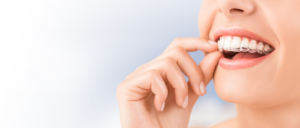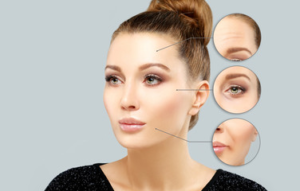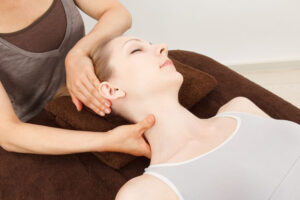Chiropractor In Frisco TX doctors focus on diagnosing and treating the cause of health issues rather than focusing on the symptoms. In some cases, a chiropractor may recommend pain relievers.
Your chiropractor may manipulate your spine and other joints in ways that produce popping or cracking sounds, similar to cracking knuckles. This is caused by the release of gases, such as oxygen and nitrogen, trapped in your body’s joints.

Musculoskeletal misalignment is one of the leading causes of back pain. A Chiropractor can help to correct spinal misalignment and relieve muscle tension. This helps to alleviate pain in the muscles and joints and can also promote healing in the area.
While the symptoms of spinal misalignment can vary, they often include pain and tenderness. This pain can be localized to a particular area of the body or can radiate through the entire body. In addition to pain, other symptoms can include fatigue or numbness. It is important for a person to consult with their chiropractor as soon as they begin experiencing these symptoms.
Chiropractic is a holistic approach to health care that is focused on diagnosing and treating musculoskeletal issues, especially those related to the spine. Chiropractors are trained to identify and treat problems involving the joints, bones, ligaments, tendons, and muscles. They also use spinal manipulation and other specialized treatments to relieve pain and encourage the body’s natural ability to heal itself.
The human body is designed to be in proper alignment. The joints are all supposed to line up both vertically and horizontally. If they do not, the body will let you know that something is wrong in the only way that it knows how – through pain! This is why it is so important to maintain your posture and spinal alignment.
Chiropractors can help you achieve the healthy alignment that you need to live a happier and more pain-free life. Unlike other practitioners, they focus on identifying and treating the root cause of your posture and alignment issues rather than just masking the problem with medications. This has been shown to be more effective for achieving long-lasting results.
To determine where the areas of spinal misalignment are, a Chiropractor will perform a hands-on exam. This will involve palpating the patient’s muscles and joints to feel for points of tenderness or tightness. They will also feel for movement in the joints to detect any abnormalities. This information is used to create a customized treatment plan that will be utilized during the adjustment sessions.
Whether it’s back pain, headache, neck pain or any other injury or health condition, your chiropractor can help you relieve the discomfort. This is done through a combination of hands-on therapies like spinal manipulation and manual adjustment, soft tissue therapy, massage, acupuncture, joint mobilization and other techniques. These hands-on treatment methods reduce pain, improve alignment and encourage the body to work as it should.
The chiropractor’s job is to identify the root cause of your discomfort and then offer treatments that help alleviate it. This includes asking questions and performing hands-on examinations to pinpoint the issue. Your chiropractor may also use diagnostic imaging like X-rays and MRIs to confirm their findings. They can then provide you with a differential diagnosis and working diagnosis, which is the most likely cause of your discomfort.
Spinal manipulation, or chiropractic adjustment, is one of the most common and well-known therapeutic procedures performed by chiropractors. During this procedure, your chiropractor applies a sudden force to the joints in order to break down any scar tissue and restore movement. When this happens, it is common to hear popping or cracking sounds.
Aside from spinal manipulation, your chiropractor may also prescribe therapeutic stretching exercises to ease tight muscles and increase range-of-motion. They might also recommend nutritional supplements and exercise to help you manage your weight and improve your overall health.
Some other forms of pain relief are ice packs, warm compresses and over-the-counter painkillers. However, your chiropractor may also recommend specific heat or cold therapy, braces, kinesio taping and other therapeutic tools to aid in your recovery.
There are two types of pain: acute and chronic. Acute pain occurs suddenly and usually doesn’t last long, but chronic pain is more persistent and can have a negative impact on your life. Chronic pain can cause numbness, tingling, muscle spasms and depression. A chiropractor can help with both of these by identifying the source of your pain, providing relief through hands-on therapy and helping you change your lifestyle. They can also refer you to other healthcare professionals for additional help.
Posture is often considered the hallmark of good health, with benefits extending to mood, self-esteem and how others perceive you. It also plays a significant role in the maintenance of healthy spinal alignment, delaying joint deterioration and associated pain.
A chiropractor is able to notice imbalances in your posture that can cause damage over time. This includes the misalignment of your spine, resulting in a hunched back or slouched shoulders. They will assess your neck, upper and lower back as well as your shoulders to see how they are aligned with each other and with your vertical midline. This will allow them to recommend treatments that improve your posture, relieve discomfort and prevent further problems.
Chiropractors can use manual spinal adjustment to restore the correct curvature of your spine and bring displaced muscles and tendons back into place. They may also perform spinal stretches and strengthening exercises to help support your new, improved posture. This can improve your range of motion, allowing you to engage in more physical activities without the restrictions that result from poor posture.
A chiro will also teach you to recognize the signs of poor posture so that you can take action early on before your posture becomes problematic. They will likely ask you questions about your daily activities, exercise habits and work environment to get a better understanding of the factors that contribute to your posture.
Once they have identified the cause of your posture issues, a chiro will treat the problem areas and recommend lifestyle changes to help you maintain your new, healthy posture. They will encourage you to practice daily stretches and strengthening exercises to ensure your posture stays in its proper form. This will ease tension in overactive muscles and allow weaker ones to grow stronger, preventing future posture problems from occurring.
Whether you are experiencing back or shoulder pain or just want to improve your posture, chiropractic treatment can be an excellent option for you. Posture correction not only treats current concerns, but it can also prevent future injuries and aggravated chronic diseases. It helps with evenly distributing body weight, which in turn lessens stress on particular regions of your spine and joints. This approach to posture correction is essential for the maintenance of long-term postural health and overall wellness.
Health promotion and prevention are areas of growing interest to most people as evidenced by billions spent annually on exercise equipment, herbal supplements, and other products intended to help individuals take an active role in sustaining their own health. The chiropractor is well suited to counseling patients on healthy lifestyle behaviors that may help them achieve their health goals.
While most chiropractors are concerned with the diagnosis and treatment of musculoskeletal conditions, many are also actively engaged in health education and wellness initiatives. The chiropractic philosophy stresses a holistic view of the individual in which musculoskeletal and nervous system function are interrelated. This whole-body approach to health is essential in preventing illness, disease and maintaining a healthy state of body/mind.
A chiropractor can assist a patient with healthy lifestyle choices that can prevent and/or control health problems such as ocular diseases, cancer, diabetes, heart disease, obesity, arthritis, fibromyalgia, and more. Chiropractors are also frequently consulted for advice on the use of nutritional and herbal supplements and other complementary healthcare practices such as massage, physical therapy, and meditation/relaxation.
The chiropractor’s primary focus is restoring/maintaining spinal/joint alignment in order to improve function and allow the nervous system to properly communicate with the rest of the body. When this communication is impaired, a person experiences pain and/or illness. Chiropractors also offer a wide variety of rehabilitative exercises to assist patients in recovering from injuries or illnesses and regain proper function.
Many chiropractic clinics include a full range of wellness services such as massage, nutrition, acupuncture, herbal medicine and dietary modification. In addition to these, some clinics provide specialized exercise and ergonomic equipment and offer educational programs on a variety of topics such as injury/illness prevention and management, spinal rehabilitation, and general health maintenance.
Several chiropractic academics have written extensively about the chiropractic profession and its involvement in promoting and supporting health promotion and prevention strategies. Among these are Jennifer Jamison and Cheryl Hawk. Jamison’s study of the opinions, beliefs and practices of chiropractors regarding their participation in providing health indicator counseling to their patients at 20 Australian chiropractic clinics found that most chiropractors surveyed believed they should provide patient counseling on healthy lifestyle topics, but most did not actually do so. For example, 78% of the chiropractors surveyed agreed that they should discuss lifting techniques with their patients, but only 64% had actually done so in the previous 3 months.







